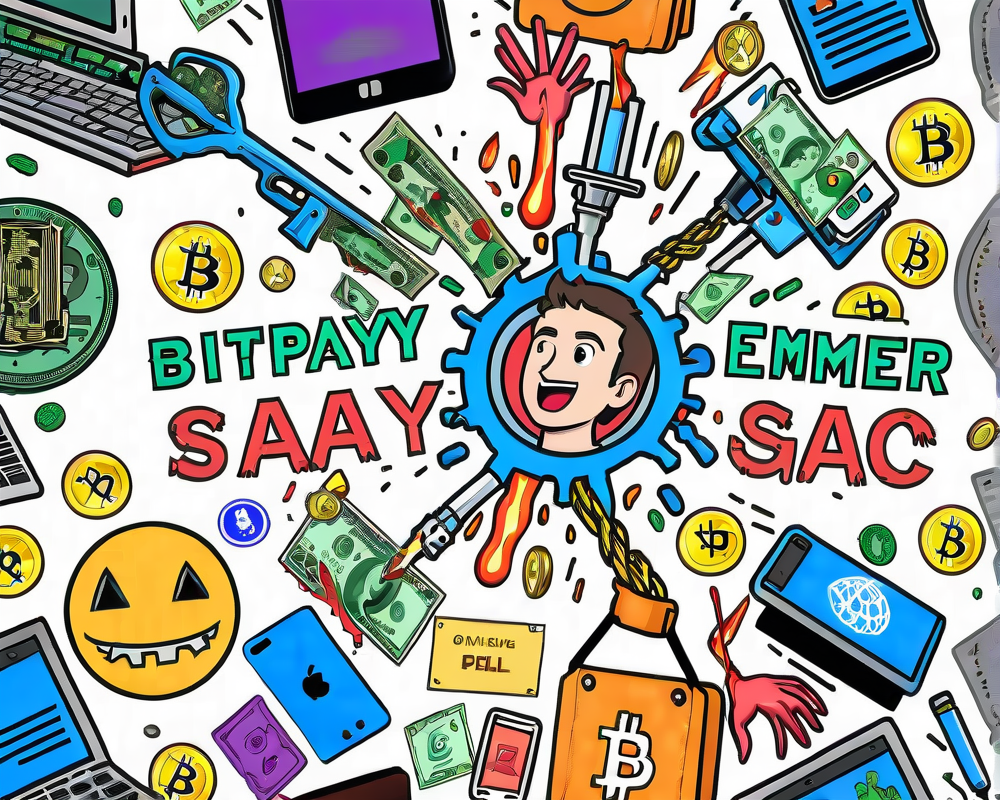Hacking Scenario: How a Ransom Demand Unfolded
In a plot twist worthy of a tech thriller, a Canadian insurance firm found itself on the wrong side of a malicious cyberattack in October 2019. Unknown hackers infiltrated the company, deploying the notorious malware known as BitPaymer. In less time than it takes to binge-watch an entire season of a series, the hackers encased the firm’s data in a digital vault, leaving behind a ransom note demanding a whopping $1.2 million in Bitcoin (BTC). Talk about a plot twist!
The Drama of the Ransom Payment
So, what did the insurance company do? Rather than call it quits and accept defeat, its UK-based insurer, let’s call them AA for anonymity’s sake, leaped into action. They made the decision to cough up the Bitcoin ransom. Within a blink of an eye—well, a few days at least—the firm’s systems were back up and running, but the drama didn’t end there.
Following the Bitcoin Trail: AA’s Determined Quest
After regaining access to their systems, AA took to the virtual streets seeking justice by tracking down the Bitcoin paid to the hackers. Partnering with blockchain investigations firm Chainalysis, they uncovered a startling discovery: 96 out of 109.25 BTC had been transferred to a wallet linked to the Bitfinex exchange. Cue the dramatic music, because this was about to get messy!
The Legal Tug of War: AA vs. Bitfinex
In December 2019, AA initiated a lawsuit against Bitfinex, hoping to reclaim what was rightfully theirs. UK courts often provide remedies for victims of fraud, but this case was a whirlwind of complexities. AA sought out the judges, requesting Norwich Pharmacal orders and freezing orders to reveal identities and traces of the stolen BTC. But, in an unexpected turn, the court ruled in a groundbreaking decision that Bitcoin could be considered property under British law, paving a way for legal action.
Legal Concepts at Play
- Norwich Pharmacal Orders: Forcing third parties to disclose information to help recover assets.
- Freezing Orders: Stopping defendants from mishandling their assets while hearings are underway.
However, even as AA achieved some early victories, the stolen BTC was transferred again before they could lay claim, causing frustration and fury.
The Case Closure and Costing Outcome
What followed was a series of unfortunate events resulting in AA abandoning its claims against Bitfinex. Generally, dropping a case means the claimant takes on the defendant’s legal fees, but AA fought back, suggesting Bitfinex had acted unreasonably. Spoiler alert: the court didn’t buy it, leading to AA being ordered to pay 100% of Bitfinex’s legal costs. Talk about an expensive mistake!
The Bigger Picture: How Ransomware and Legal Proceedings Intersect
This tale serves as a vivid reminder that while insurance firms may believe they can outmaneuver a miscreant in a legal showdown, it’s easier said than done. Cybercriminals have the shadows on their side, while innocuous exchanges like Bitfinex are left to defend their innocence. It’s a global game of cat and mouse, where the stakes can reach astronomical heights, resulting in legal bills that may just leave you scratching your head—or your wallet.
As this saga closes, one thing is clear: the intersection of cryptocurrency and law is a realm still under exploration, with challenges that will keep both lawyers and judges on their toes.




